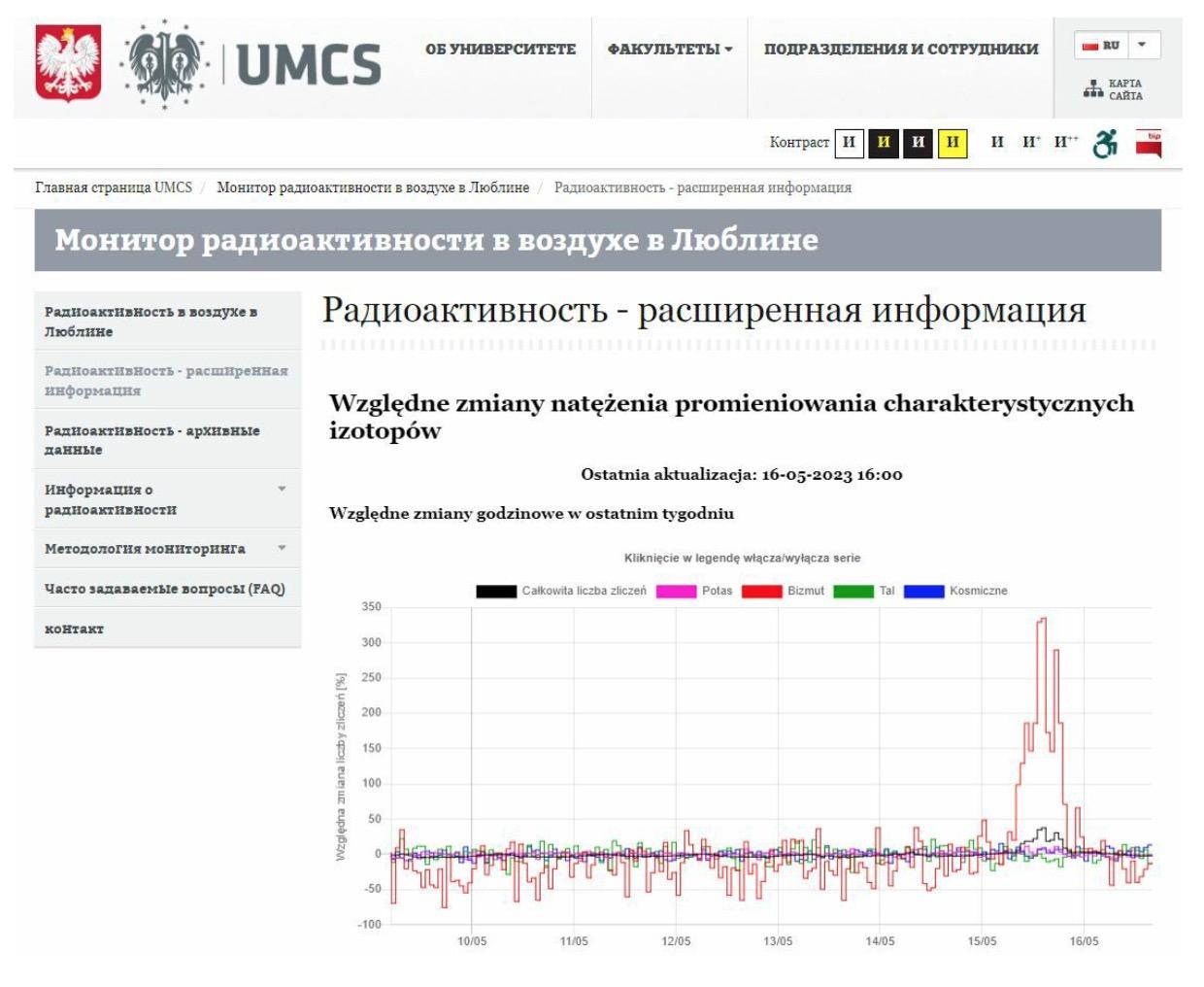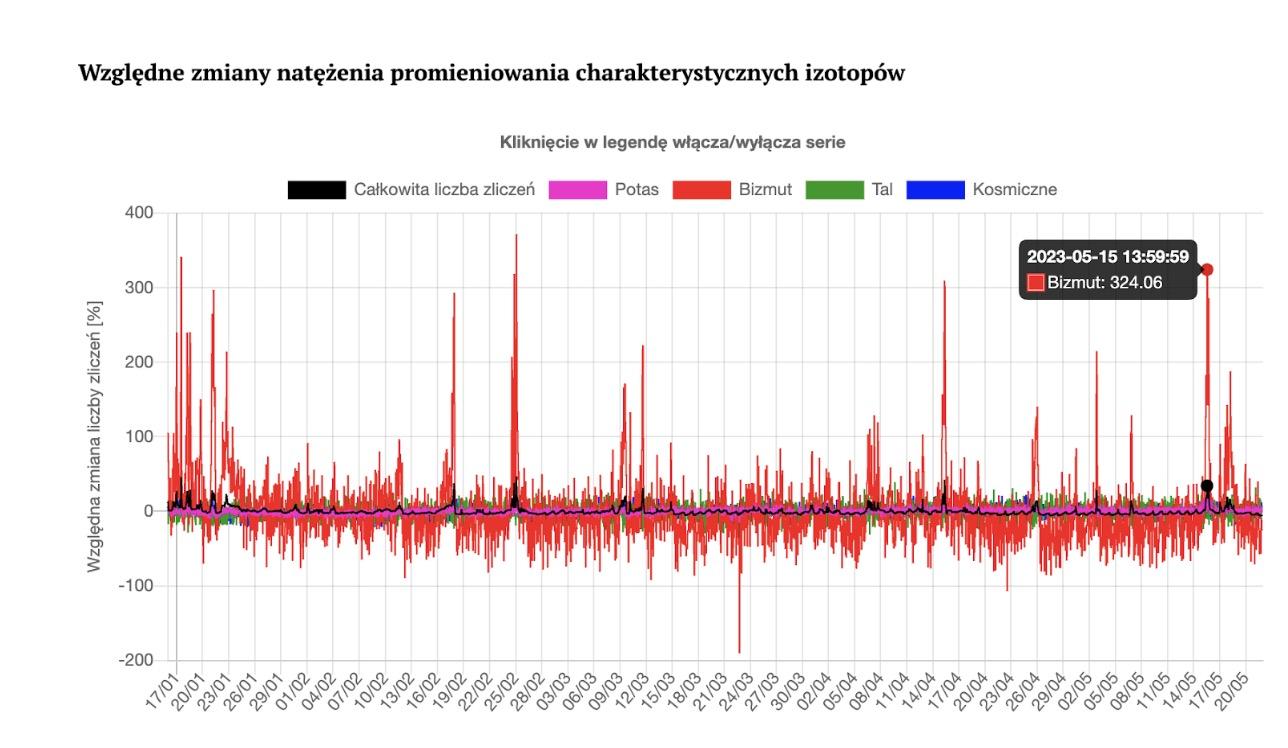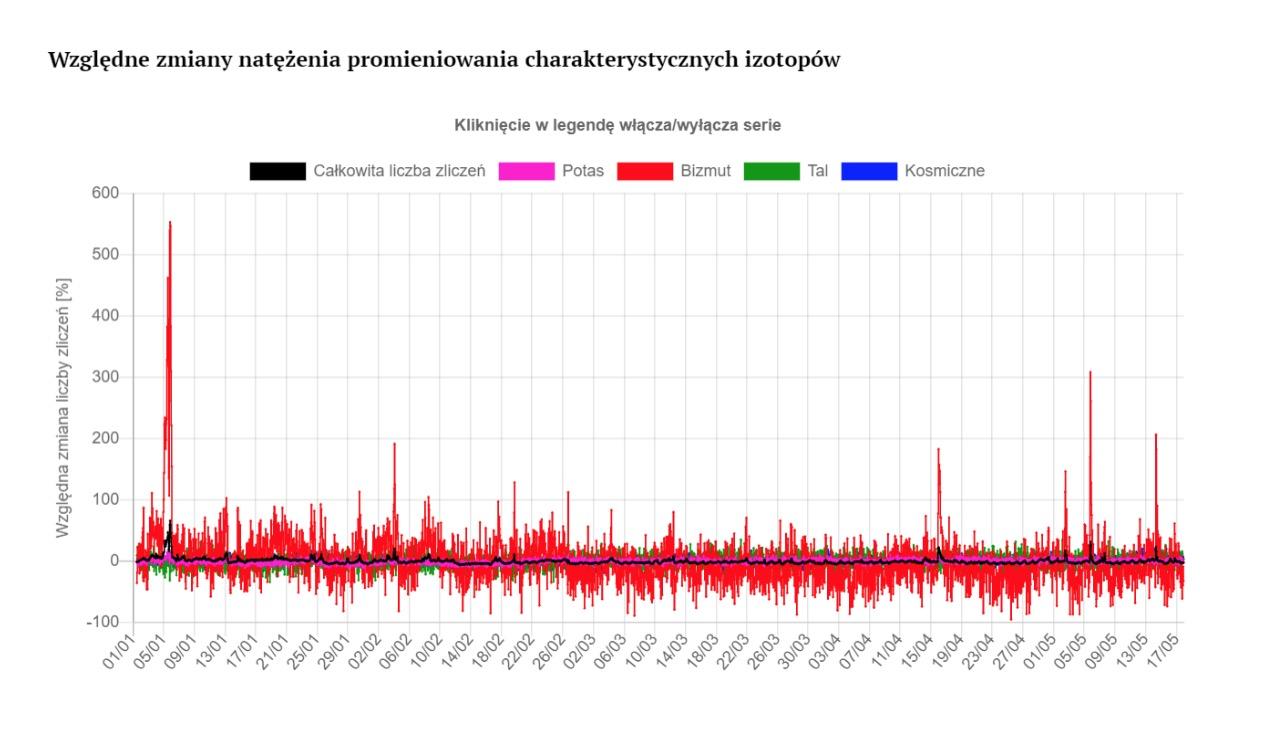Fake#5. Explosions in Khmelnytskyi cause a radioactive cloud to move to Europe
Fake date: 16.05.2023
Also, in occupied Luhansk, Ukrainians hit several previously inaccessible objects with the help of recently supplied long-range Storm missiles. As a result, the Armed Forces of Ukraine hit up one of the locations of Russian troops, said Igor Strelkov, a former separatist commander in the unrecognized DPR.
On the same day, Russian drones attacked the Khmelnytskyi region of Ukraine and, according to Russian media reports, destroyed an ammunition depot.
Old Soviet bombs were stored there, the Insider reports. And the Kremlin claims that these were depleted uranium tank shells, which the UK had previously supplied to Ukraine.
In Lublin, Poland, the level of radiation has increased, the Telegram channel after former Israeli intelligence officer Yakov Kedmi claimed. Belarusian and Russian state-run media picked up this message.
“In the east of Poland, radiation levels spiked in the air. Yesterday, in the air in Lublin, Bismuth levels spiked 6-7 times by instrumentation. Bismuth is the decay product of depleted uranium used in munitions. Poles wrote in comments that the radiation threat came from the Khmelnytskyi region, where a "geranium" strike on the morning of 13 May destroyed the 649th aircraft depot,” Kedmi reports and publishes the following screenshot.

The Maria Curie-Skłodowska University monitors the level of radiation in Lublin. Indeed, a spike in bismuth levels was recorded at 14:00 on May 15. In such a form, the data looks really intimidating.

However, based on bismuth data for 2023, such spikes are a fairly common story. They have happened quite often even before the explosions in Khmelnytskyi. They also have been before the war in Ukraine started.

Here is the bismuth levels data for the same period in 2021. Obviously, the previous spikes have been even more serious than the recent ones.
In response to our question about the causes of bismuth spikes, the university recommended that we look at its website.
Bismuth is in the air in the dust form. When it rains or snows, metal particles settle on measuring instruments. That is why at the beginning of the rain the bismuth level is fixed much higher than at the end when the rain washes it away from the devices.
Thus, the bismuth level spikes are of natural origin and don't pose a danger, the university said in a statement. It also said that this isotope is one of the decay products of natural uranium-238.
The news about the radioactive threat is disinformation, National Atomic Energy Agency officially announced on May 17.
However, a couple of days later, on May 19, the show went on. Secretary of the Security Council of Russia Nikolai Patrushev claimed that a radioactive cloud was moving from Ukraine to Europe.
“They also “helped” Ukraine by putting pressure on their satellites, and supplying depleted uranium ammunition. Its destruction led to the fact that the radioactive cloud headed toward Western Europe. And in Poland, a radiation level increase has already been fixed," Patrushev claimed.
The BIC learned the data of the Federal Office for Radiation Protection of Germany. On May 19, no changes in the radiation level were recorded there.
European Commission Joint Research Center measurements environmental radioactivity across Europe and also doesn't see any radioactive cloud impending.
By the way, on the Gamma Dose Rates Advanced Map, the highest level of 450 nanosieverts is shown near the town of Bragin, Belarus. The Ministry of Natural Resources and Environmental Protection confirms this information.
That is, the level of radiation there is twice as high as in Ukraine or the EU.
Well, the last. To confirm both the rumors about the explosion of a warehouse with DU shells and the claims it created a risk of radioactive threat, the Komsomolskaya Pravda outlet analyzed the Ukrainian service's information about radiation measurements at the explosion site.
“Their words are indirectly confirmed by Ukrainian services that monitor the radiation level. On May 12, there was a spike from 60-80 nanosieverts (normal) to 140-160. It's not very high, but such a spike, and such a sharp... ” the outlet reported.
As our check shows, the level of radiation in Khmelnytskyi did rise, but a few days before the explosions mentioned in the article.



